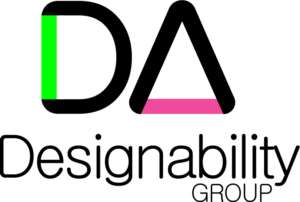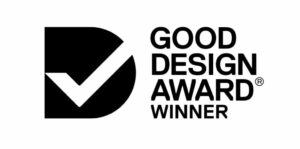Don’t underestimate the power of drawing when developing design ideas. Drawing is a kind of thinking and the way you draw will affect your design thinking. If you are slow, hesitant and afraid of drawing then this will be reflected in your design work. In fact, this is most people. Drawing ability is not really an indication of creativity, but we do often put the two together. For most of us we think we are less creative because we find drawing difficult. Drawing ability is needed to get the ideas out of your head, but if you find drawing difficult it doesn’t mean you aren’t creative in the first place. You just need the right tools at your fingertips. When you can draw confidently something else happens too. Your deisgn ideas get better. Drawing is not just about getting ideas out of your head, it is about exploring ideas as well. Every time I want to develop a design idea half of it is in my head and the other half seems to come together on the page. Something magical happens and I end up with an idea I could not have had if I just thought about it. I needed to draw it. And from this idea is spawned the next half idea that I draw and develop. In the end I have a design solution that could not have happened without the process of drawing. It’s pretty special.
Sometimes old-school is best
Computers are good at representing objects in perspective. They’re great. You can draw in 3D, it can be rendered. It’s a powerful tool, but as a design tool there are some limitations. It’s no coincidence that school students take to the VP3 Board like ducks to water (unlike drawing software). There is something much more human about holding a pencil and making a mark on the page than there is in clicking a mouse. Drawing on a page is definitely old-school, but the results are immediate, satisfaction greater, a better sense of achievement and you are not stuck looking at a screen. There is a strong place for this more human approach to design. For those who have found drawing difficult, the tendency has been to take refuge in a software solution. I think this is ‘throwing the baby out with the bathwater’. Get a better result, and do better design work with the VP3 Drawing Board.
It’s all about creativity
I use drawing so that I can develop my design ideas. The drawing is a means to an end. Ideally, I don’t want to think too much about the drawing itself, I want to think about my design. The more you think about your drawing, the less you think about your design. This is the thing about drawing, it is the gateway to creativity, but it isn’t creativity itself. If you think too much about whether or not you are drawing a ‘correct’ line, then your design ideas will be stifled, you will be less creative. In this instance the act of drawing has become a barrier to creativity. But if you are able to draw confidently and quickly drawing becomes the gateway to creativity. It comes down to having the right system. This is why I say that the VP3 Board is really a creativity tool not a drawing tool. The goal is creativity and drawing is just the way we get there.
There’s plenty of big books on how to draw in perspective, but why bother – they will just slow you down. Some people love the theory of perspective: “this is how I did it at technical college and it’s a shame no one teaches it anymore”. They are talking about the super slow ways of doing accurate perspective – you can go and explore them if you are bothered. If you want to draw so that you can be creative you won’t. You want a system that is fast and will give you perfect perspective and all you need is the VP3 Board.
Draw like a designer
Here’s some tips to help you draw like a designer. First of all think like a designer. You are not drawing a final product, so don’t expect to. Every line you draw is just loosely indicative. It will not be right or wrong, it is just an idea. Start by drawing in pencil, but resist the urge to rub any line out. Doing so will just slow you down and will also reinforce the idea that some lines are correct and some are incorrect. Remember, speed is important. Once you have drawn your object on the page, you will also have lots of extra lines that you don’t want to draw attention to. Instead of rubbing these out, simply go over the lines you want to keep with a fineliner (black, fine, felt-tipped marker such as the Artline 0.4mm). All the extra lighter pencil lines show that the drawing was a process and this is what design is about. In this early stage of the design process we don’t expect that we will come up with our final design here. We expect that our ideas are only just forming, and our graphic style should reflect this.




